Extraordinary Trade Show Displays: How to be Best in Show
The fundamentals of effective trade show displays boil down to your story, your staff, and your execution. Before and during the show, there will be plenty of distractions or gimmicks at other booths, but if you relate to your audience and to the context of the broader show, you won’t get lost in the din of the event.
The Best Story
 The best trade show displays tell a story—your story—clearly and engagingly. Vagaries, misdirection or over-generalized displays won’t do you or your brand justice. You have to assume that visitors have already been annoyed by other booths that take too long to understand. This doesn’t mean that you have to be boring or robotic in presenting your brand, but it should be relatively straightforward for people to ascertain your basic mission and offerings in about a minute. A clear and upfront story buys you time to expound on your latest projects, rather than clearing up confusion over the basics.
The best trade show displays tell a story—your story—clearly and engagingly. Vagaries, misdirection or over-generalized displays won’t do you or your brand justice. You have to assume that visitors have already been annoyed by other booths that take too long to understand. This doesn’t mean that you have to be boring or robotic in presenting your brand, but it should be relatively straightforward for people to ascertain your basic mission and offerings in about a minute. A clear and upfront story buys you time to expound on your latest projects, rather than clearing up confusion over the basics.
The Best Staff
Send some members of your staff around the show floor to explore other trade show displays. In this way, you’re taking advantage of your presence at the trade show by learning things you can only learn by actually being there. Pay particular attention to your competitors, of course. It’ll make the investment in the show that much more valuable.
When you’re knowledgeable about other displays, you can also anticipate visitors’ reactions, preempt their questions and explain how your services are different or superior to those of others on the floor.
The Best Technology
Remember that a trade show is powerful, old-fashioned, offline interaction. Even if you decide to use screens, computers or other gadgetry for demos, the particular presentations should be unique and unlike anything that a visitor can easily view online at home. At the same time, visitors to your display should be eager to go home and check out your site. The show doesn’t end when you pack up the display. If you present yourself right, it’s only the beginning.
Vacuuming Is Not Something to Overlook at Your Trade Show
It is no secret that exhibiting at trade shows, while widely considered the best dollar-for-dollar marketing investment, are chock full of costs. When it comes to saving money at shows, the devil is certainly in the details. Sometimes you can grossly over pay for services you might not think about until you even get to the show.
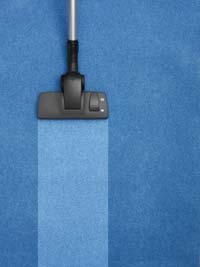 When exhibiting, people are going to be coming and going in and out of your booth all day for as many days as you are exhibiting. If you have carpet, you are probably going to need to think about vacuuming if you want to keep your booth presentable. If you are not careful, this can result in major costs for you once you get on the floor.
When exhibiting, people are going to be coming and going in and out of your booth all day for as many days as you are exhibiting. If you have carpet, you are probably going to need to think about vacuuming if you want to keep your booth presentable. If you are not careful, this can result in major costs for you once you get on the floor.
One of my clients, a software company based in California, was exhibiting at a five-day show in Chicago. They had a carpeted 20’ x 40’ booth, so they knew they were going to need some vacuuming services. When they requested this service, we looked into the hall for vacuuming prices. Having the booth vacuumed once every night by the hall would have cost our client over $1000!
Most trade shows will allow you to vacuum your own booth, but if you want someone else to do it, you must use the designated contractor.
Instead of having our client pay such a ridiculous price for something that one of their staff members could do in less than 10 minutes we came up with a solution. We simply made space in one of the shipping crates and included a vacuum cleaner that could be assembled on the floor and then stored in their trade show booth. Their carpet was swept every day for the show, they got the word out about their new products, and the show was a success.
Top 10 Tradeshow Display Design Fundamentals
- Study the show’s attendees – know how many are expected and which ones represent prospects for you.
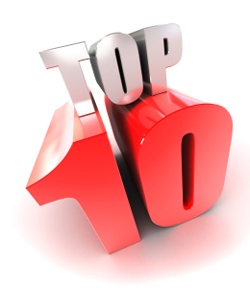 Know your position in the convention center – the location of your booth as related to the main entrance, the largest exhibits, food and beverage areas or anything else that is likely to impact attendee behavior.
Know your position in the convention center – the location of your booth as related to the main entrance, the largest exhibits, food and beverage areas or anything else that is likely to impact attendee behavior.- Think about both long and short range corporate identification – how will prospects find you, and how will they know who you are when they are standing in front of your booth?
- Consider an activity to attract attention – live demonstrations, presentations or other booth activities will cause people to stop and watch.
- Imagine an important prospect approaching your booth – What will they see? How will they be greeted? How much time will they want to spend with you? How will you record their information for follow up?
- Think about the sales process – your booth graphics can be arranged to assist and guide the sales presentation process.
- Consider the image that you want to project – make a list of adjectives that describe your corporate image.
- Think about the practicalities – presentation stations, storage of briefcases, utilities, meeting areas, video, etc.
- Come up with a budget – Not only a number but also what it should include.
- Look for photos – Find some images that are examples of booths you like. Be sure to indicate what it is you like about each particular photo.
Thinking about and preparing these things before you contact an exhibit designer will make the process much easier and more efficient. Best of all, with the right preparation, you’ll end up with a design that fits your style and meets your needs!
Trade Show Exhibit Design: “Think outside the box”
I have a friend who always seems to come up with a new, successful angle for every trade show. Recently, I asked her, “How do you do it?” The simple reply, “I always force myself and my team to think outside the box. I challenge everyone involved to do the unexpected and come up with new ways to attract attention and create excitement.”
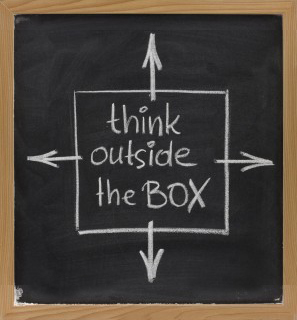 I thought about this advice for a moment. It rattled around in my head. At first, I thought, “I always think outside the box.” Then I started to really evaluate what this common expression means. It is an appealing concept, but is it the right approach for every company, for every brand? And did I really always “think outside the box”? Yes, or at least my goal is always to come up with new ideas and “out of the box” solutions. I just never used that expression to describe my efforts.
I thought about this advice for a moment. It rattled around in my head. At first, I thought, “I always think outside the box.” Then I started to really evaluate what this common expression means. It is an appealing concept, but is it the right approach for every company, for every brand? And did I really always “think outside the box”? Yes, or at least my goal is always to come up with new ideas and “out of the box” solutions. I just never used that expression to describe my efforts.
What is the “box”?
The trade show’s “box” can be big or small. It can have lighting and dramatic banners. It is the expected trade show exhibit, staffed by smiling people representing a company trying to get leads, offering a free gift or a few samples or some sales material. The box is ordinary, stamped out, one after another just the same in different colors. The box is forgettable.
“Outside the box” exhibits
These are the exhibits that give an attendee a new perspective. These are the exhibits that make lasting impressions on the people who see them. To be effective they require more than just being novel, creative ideas; they need to be thoughtful and suitable for the target audience and the brand. Very few trade show exhibits truly rise to this challenge.
Should every company strive to do the unexpected?
As long as the exhibit is consistent with the brand position and brand values, and successfully promotes your products or services, the answer is, “Yes!” It is a real trick to balance inspiring creative with the hard-hitting sales message that this tough economy demands, but when you achieve it, the results can be stunning.
How to get “outside the box” ideas
The first step in creating a breakthrough exhibit is to build a team that shares that commitment. Once you have assembled that team, make sure that they consistently focus on really solving the marketing challenge that faces you in new and interesting ways.
Best Lighting Solutions for Trade Shows
Proper lighting is an essential component of your tradeshow booth and can help increase traffic and create a favorable environment in which to pitch your company’s products. According to booth design expert, Bruce Baker, who’s published articles on booth lighting, a good lighting system that functions at peak performance will boost sales more than any other item you can purchase.
Your lighting requirements will vary depending on your specific promotional goals, display configuration, exhibit color and design, booth lighting fixtures, and space. To determine what type of lighting will best create effective, creative exhibit illumination, you must carefully consider the following questions:
- What area or product in your booth will need to be the focal point?
- What visual impact, impression, or message do you want to convey through lighting?
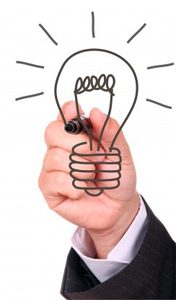 When you want to create a spotlight effect to highlight one particular area of interest in your exhibit, you might consider overhead truss lighting. If you’d rather create a more inviting, warm and welcoming atmosphere to make prospects feel more comfortable, you might select a soft lamp or ambient lighting.
When you want to create a spotlight effect to highlight one particular area of interest in your exhibit, you might consider overhead truss lighting. If you’d rather create a more inviting, warm and welcoming atmosphere to make prospects feel more comfortable, you might select a soft lamp or ambient lighting.
Special illumination techniques can be used to create a more dramatic atmosphere that can possibly draw more attendees to your booth by setting it apart from competing booths. Determining the mood you want to create—exciting and dynamic or warm and inviting—will go a long way towards helping you determine the most appropriate lighting.
Other questions to ask when weighing your lighting options are:
- What type of lighting is being supplied by the exhibition facility?
- How much power will be available in your booth?
- Would additional power be available, if your lighting needs require it?
- How are light fixtures attached to your display?
- How much can you spend on display lighting systems?
Once these questions are answered, you can go to your lighting supplier and find the best solutions for your particular needs. Good lighting can lead to increased booth traffic, additional sales leads, and possibly higher resulting sales, so choose wisely.
The Low Down on Trade Show Exhibit Layouts
There are ins and outs and pros and cons to all the various types of trade show booth layouts, and determining which layout will deliver the best results for your company can be a difficult task. Evaluating your company’s needs and objectives will be your first step in determining which exhibit floor plans will work best for you.
 Let’s take a quick look at some of the more popular tradeshow exhibit layouts and the pros and cons of each to make that decision easier. Keep in mind, however, that variables exist between each layout type. Exhibitors can change each layout’s components, size, and positioning and mix and match layouts and elements to suit different situations.
Let’s take a quick look at some of the more popular tradeshow exhibit layouts and the pros and cons of each to make that decision easier. Keep in mind, however, that variables exist between each layout type. Exhibitors can change each layout’s components, size, and positioning and mix and match layouts and elements to suit different situations.
Classic Diamond.
Consists of a large, central structure with a series of independent elements (kiosks, demo stations, graphics, product displays) surrounding it.
Pros: This layout offers a strong visual presence, and its simplicity and lack of walls helps draw in visitors. Also works well for displaying multiple small products.
Cons: The layout’s central structure blocks view across the booth and offers only one spot for a single, high-impact statement or slogan. As far as traffic, this layout requires careful staffing to encourage visitors to explore the whole booth.
Centerpiece.
Typically used when one message or product needs to be featured; all other elements are directed toward one main focal point.
Pros: This layout offers easy access to focal point of booth and offers great impact for main marketing message or slogan. Allows easy access to main focus of booth.
Cons: This layout type offers little flexibility over time and single focus makes it hard to hold attendees’ interest for very long. Central focus of exhibit can attract so much traffic to cause congestion.
Theater.
The underlying purpose of this layout is to show some form of a presentation. Rather than walls, it uses dividers along the sides and demo stations or kiosks along the back.
Pros: Layout drives all attention toward presentation and openness encourages visitors who shun enclosed presentations. Allows strong medium for message delivery and partitions can display smaller, tangent messages.
Cons: Singular focus prevents highlighting multiple products. Offers no capture effect and quick exits after presentations difficult to prevent.
Club.
Also referred to as a closed exhibit, this layout type uses some type of material to create a fully or semi-enclosed environment within the booth space.
Pros: Interior offers quiet off-floor environment and exterior walls can attract attention and deliver messaging. Allows complete control over entry and exit of visitors. Exhibit walls offer lots of space for graphics.
Cons: Attendees can’t see main focus until they step inside and limited entrances discourage walk-up traffic. Main entrance clogs easily and confusion can result from too many messages.
Random Display.
This layout deconstructs formal floor plans in an effort to look unique and consists of an arbitrary arrangement of shapes, activities and elements.
Pros: Allows use of multiple products and presentation media. Permits many levels of messaging.
Cons: Prevents highlighting one central focus and multiple messages can cause chaos that work against proper message delivery. Confusing layout can be difficult to navigate and traffic can clog at focal point.
Plaza.
All large structures are pushed to the aisles to create an open, inviting environment in the center for casual conversation and product displays.
Pros: Offers open and inviting interior space that allows all elements to be seen at once. Openness encourages attendees to wander and explore; visitors are free to leave as easily as they enter. Allows placement of large graphic displays.
Cons: Doesn’t offer one main focal point. Central elements can draw too much traffic, causing congestion.
What is a Custom Tradeshow Exhibit?
Next to the word portable, the word custom is the least clearly defined term in the trade show business. Marketers from various display companies add “custom” to almost every product description. It sounds good and makes it easier to justify high costs.
 My definition of custom is something that is designed and constructed one at a time versus something that is engineered and mass produced. In general terms, display companies are either building displays one at a time or operating like a typical mass production company by designing products, doing the research and development and going into mass production.
My definition of custom is something that is designed and constructed one at a time versus something that is engineered and mass produced. In general terms, display companies are either building displays one at a time or operating like a typical mass production company by designing products, doing the research and development and going into mass production.
So, what does this mean to the buyer? There are advantages to both types.
Traditional Custom Exhibit Company
Designers at a traditional custom exhibit company can allow their imaginations to run wild and (assuming there is enough budget) the shop can produce it. There is no need to try and fit the design into a certain type of construction material or system. These displays are mostly unique but may end up to be heavier and bulkier.
System Component “Custom” Exhibit Company
Designers at a system type of company do some pretty amazing designs but are generally limited to using components from a catalog. The advantages to using system components are that they are, in general terms, better engineered, lighter weight and packaged more efficiently. Cost differences between the two types are negligible.
So, now that you know the difference, what do you do? In my opinion, if you are using the exhibit at 5 or fewer shows per year, buy the best design from a reputable supplier. If you go to more shows, the engineering and packaging issues are more important.
Either way, don’t be fooled by the word custom. Find out exactly how your display will be produced and make the choice that is right for you.
Staff Your Trade Show Exhibit to Win!
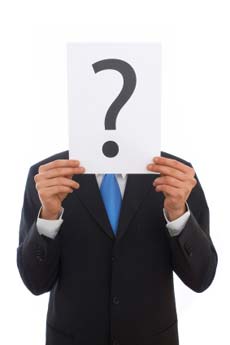 Anyone who has attended a trade show can tell you that the best booth, in the best location, with the best promotion, may not get the sale if you do not put together the right team to represent your company.
Anyone who has attended a trade show can tell you that the best booth, in the best location, with the best promotion, may not get the sale if you do not put together the right team to represent your company.
Overall, you are looking for people who are fun to be with and who can help bring your booth to life. Here is a checklist of critical factors to consider when selecting your team.
- Make sure you have the right number of people to staff the booth. It depends on the type of show, your business sector and the type of promotional campaign you plan. A good rule of thumb is one person for every 50 square feet of booth space, including break coverage.
- Make sure that the people staffing your booth have an appearance that is consistent with your brand and trade show campaign.
- Look for people who are naturally friendly and outgoing, and who smile. You want people who are eager to meet attendees.
- Select people who are good listeners and who know how to ask open-ended questions that encourage prospects to talk about their needs.
- Choose team members who know your business sector or who can be quickly trained to knowledgeably answer questions. It is best to select people who know your product, your company and its capabilities, and who know the competition.
- Think about attire and set a dress code. Don’t leave this critical element to chance. Make sure your entire team is willing to follow the dress code.
Once you have selected your team, make sure they have the tools they need and are properly trained to represent your company, qualify leads and secure sales.
Avoid Being Part of the “Boring Sea of Tradeshow Sameness”
I attend a lot of trade shows – hardware, books, electronics, men’s wear, food service, medical equipment, etc. – if there is a trade show, odds are I’ve probably been to it.  It’s part of my job. Sometimes it is a delightful part of what I do – but all too often I can walk an entire trade show floor and not see one new, inspiring idea.
It’s part of my job. Sometimes it is a delightful part of what I do – but all too often I can walk an entire trade show floor and not see one new, inspiring idea.
So far this year at the shows I have attended, I have found that most booths are professional looking and nicely designed but I often don’t remember anything the minute I move on to the next aisle. The words that come to mind: boring, formulaic, and devoid of any discernable brand personality.
Everything is perfectly planned, so why aren’t you more successful?
You have a great location for the show – right up front, with lots of traffic. You have a beautifully designed booth that is uncluttered and well-merchandised. You have great people who know that a positive attitude is essential. Yet people just keep passing by, and don’t even slow down.
Ask yourself, why should someone stop at your booth?
Think about what it is like to attend this show or conference. After three hours of seminars and speeches, the conference attendees finally get a break. They enter the exhibit hall and are greeted with hundreds of booths and the din of people chattering, music and sales presentations. They quickly walk down the aisles and select a few booths to visit. What can you do to make your booth one of those stops?
Avoid being part of this “boring sea of sameness”?
Do something different and unexpected. Break out of the “just another trade show exhibit” pack. And do it in a way that sells your product and builds your brand. I know it is much easier said than done, but here are a few breakout ideas:
- Entertainment: If it is appropriate to your overall message and product, hire a professional performer to be part of your booth but give it a twist. One small book publisher was promoting a new series of activity books include a book on juggling. They secured two booths located directly across from each other. Then they hired a two-person comedy juggler team who did a juggling show across the aisle. It was hard for anyone who saw this simple spectacle to pass them by without stopping. More importantly, it was hard to forget that the publisher had a juggling book coming out.
- Create a place to “escape” from the show. Provide a place to really relax that gives you a sales opportunity. Many exhibitors provide comfortable seating or have conference tables with chairs for meeting with prospects or set up beverage bars with stools. This just creates a place to relax and avoid a sales message. Often it creates a place for your staff to sit where no one can see them. The breakout idea is to incorporate the escape into the overall sales message. A travel incentive company who promotes South Pacific Getaways created a tropical beach getaway with a couple real palm trees, some fresh exotic flowers, beach chairs and tropical beverages. They added ambient sound with tropical birds and waves and simple lighting effects. The staff was dressed in tropical business attire and was actively engaged in greeting people and answering questions – they were not relaxing at the beach, they were smiling, attentive and working all the time. It was the most popular place at the entire show. Everyone who entered received a “Tourist Guide and Passport” that provided information about the company’s travel incentives.
- Incorporate an interactive demonstration. Make your booth interactive and experiential by turning the sales process into an active, dynamic experience. It doesn’t need to be a technological wonder and it should always involve 1-to-1 interaction between the sales staff and the prospect. Have something unusual for people to do, touch, smell or even taste. Bring your products to life with interactive demonstrations that focus on the key sales proposition. And if you do incorporate technology, make sure that it is not complete “self-service”. A medical technology company used an Interactive 3D display to allow prospects to explore their product, zoom, see internal mechanics, and even go a simulated “test drive”. The 3D simulation provided the company the opportunity to introduce key prospects to a very costly medical device but required some assistance from the booth staff so that there was a natural opportunity to start a dialog.
- Everybody wins. If you are going to have a prize drawing, come up with something more enticing than a fishbowl for the entries and a random drawing sometime in the future when most of the entrants are already left the show. Attendees remember events, games, and competitions. One clever exhibitor created an “everybody wins” contest with thousands of prizes. Instead of being just another booth with a free logoed giveaway, they enticed people into entering their booth and spinning a gigantic wheel of fortune. Even most of the people who won the smallest prize – a promotional item with the company’s name, website, and phone number – remembered the company because they won their prize.
- Open and inviting. The simplest way to increase the effectiveness of your trade show marketing is to open up your booth. Get rid of the table across the front and get rid of any barriers. Eliminate all the clutter. Design your trade show exhibit for graphic impact with large, attractive images and clean, simple and bold elements that will draw one’s attention. Add dramatic lighting and motion that welcomes people into your booth.
Have you seen any unique and enticing booth ideas that created buzz on the exhibition floor and attracted visitors?
Tradeshow Display Lighting – Is LED the Way to go?
Trade Show Display Lighting Can Make Your Booth Stand Out From The Competition
The explosion of LED lamps and fixtures onto the trade show display scene has changed the face of lighting going forward. Ten years ago, lighting companies’ could not produce enough lumens from an led, whereas today, certain types of LED lamps and fixtures rival traditional incandescent in light output. Although this might be a reason to consider using led over traditional lamps, and, aside from their “green” technology for the “sustainable” people out there, there are just as many cons to consider.
 If you don’t pack extra LED lamps and fixtures in your set-up kit, it might be very hard to replace them if something breaks. Sure, a local contractor or hardware store might have something similar, but with all of the product lines, and the variety of manufacturers out there, getting an exact match will be tough on the fly.
If you don’t pack extra LED lamps and fixtures in your set-up kit, it might be very hard to replace them if something breaks. Sure, a local contractor or hardware store might have something similar, but with all of the product lines, and the variety of manufacturers out there, getting an exact match will be tough on the fly.
Advice: Pack an extra box of lamps, and a spare fixture if using LED.
It’s amazing the reduction in energy consumed by LED over traditional incandescent or arc lamps. Couple this with the promise of “long Life” and you have what would seem to be an environmentally friendly “green dream” come true. Beware, all that glitters is not green. Or rather, all that is green does not glitter, at least not for long. What’s this? Well, certain 100,000-hour lamps have a tremendous amount of light degradation over the life of the lamp. What “popped” and rendered beautiful color new, will fade and dim over time. So even though it may last 100,000 hours, you will certainly not want to use it after 40,000 as the lumens emitted fall, and the color rendering degrades dramatically.
Advice: Do a little homework, and don’t buy the cheapest lamps.
There are many uses for LED lamps in a booth, however, understand, throw distances are still limited versus traditional spot or flood lamps. If you are lighting a jewelry case, or smaller product from a close distance, LED may work just fine to add that extra “pop”. However, attempting to get a full wall wash or focus a spotlight from a distance will be tough if you try to wing it with LED. Understand the throw distance for a particular lamp before you specify it in a booth. Throw distance is the distance from the face of the lamp, to the item you are attempting to light. Also taken into consideration, should be the width of the lighting pattern, and light lost over the throw distance.
Advice: Don’t just use LED thinking it is the panacea for all things green, understand what you are trying to light, and the impact LED may, or may not have.
Archives
- July 2021
- June 2021
- May 2021
- April 2021
- October 2018
- September 2018
- August 2018
- July 2018
- June 2018
- May 2018
- April 2018
- March 2018
- February 2018
- January 2018
- December 2017
- November 2017
- October 2017
- September 2017
- August 2017
- July 2017
- June 2017
- May 2017
- April 2017
- March 2017
- February 2017
- January 2017
- December 2016
- November 2016
- October 2016
- September 2016
- August 2016
- July 2016
- June 2016
- May 2016
- April 2016
- March 2016
